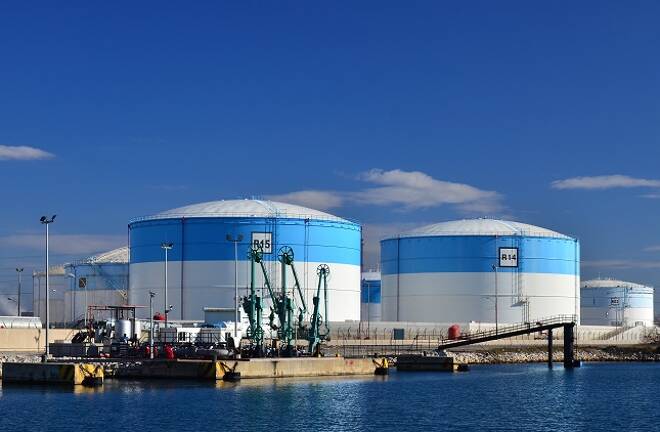Advertisement
Advertisement
Oil Price Fundamental Weekly Forecast – OPEC+ Decision on Supply Cuts Could Set the Tone
By:
Are the fundamentals strong enough to warrant another breakout to the upside, or are we due for a short-term pullback into a value area?
U.S. West Texas Intermediate and international-benchmark crude oil futures finished higher last week despite concerns late in the week over increasing production after the Texas freeze, a stronger U.S. Dollar and worries that OPEC may adjust production slightly higher in April.
Last week, April WTI crude oil futures settled at $61.50, up $2.24 or +3.78% and May Brent crude oil futures closed at $64.42, up $2.28 or +3.54%.
Despite the slight setback at the end of the week, some are expecting further strength. This comes as a bit of a surprise since prices are well above pre-pandemic levels while demand is still below levels seen before the pandemic hit a year ago.
Ultimately, it all comes down to whether there is enough speculative cash out there to continue to encourage traders to buy strength, or whether valuation becomes an issue and prices fall back into a support area.
Bank of America Hikes 2021 Brent Price View by $10/bbl on Strong Oil Balances
Bank of America (BofA) Global Research lifted its forecast for Brent crude oil prices for this year citing tighter supplies due to the Texas freeze and OPEC+ output curbs and unmatched global monetary stimulus, it said in a note last week, and Reuters reported.
The bank now expects Brent crude oil to average $60 per barrel in 2021, up from a previous estimate of $50. BofA also forecasts West Texas Intermediate (WTI) crude prices to average $57 a barrel this year.
Brent prices could temporarily spike to $70 a barrel in the second quarter of the year, the bank’s analysts said in a note.
“The big Texas freeze in the past week should reduce global inventories by an additional 50 million barrels, further supporting (oil) prices,” BoFA said.
The bank also said Saudi Arabia’s additional, voluntary oil output cuts in February and March and the Organization of the Petroleum Exporting Countries and allies (OPEC+) holding production steady were also supportive.
OPEC+’s supply deal that extends into the first quarter has removed an extra 180 million barrels from the market, creating more spare capacity, they said.
However, BofA noted the biggest short-term downside risk to oil prices may come from a new Iran deal, which could bring 2 million bpd into the market in short order.
Short-Term Outlook
Buy strength or Buy Weakness? That is the question. Are the fundamentals strong enough to warrant another breakout to the upside, or are we due for a short-term pullback into a value area?
The questions suggest we may be due for a rangebound trade until the market works out issues with OPEC+’s plan to slightly increase output when it meets on March 4. We also want to see how the market responds to the increase in production from the previously shutdown Texas refineries.
Furthermore, a couple of wildcards have entered the picture. They are rising Treasury yields that are driving up the U.S. Dollar and could dampen demand for dollar-denominated crude. And the possibility that Russia may ask for a bigger increase in OPEC+’s attempt to ease supply cuts.
For a look at all of today’s economic events, check out our economic calendar.
About the Author
James Hyerczykauthor
James Hyerczyk is a U.S. based seasoned technical analyst and educator with over 40 years of experience in market analysis and trading, specializing in chart patterns and price movement. He is the author of two books on technical analysis and has a background in both futures and stock markets.
Advertisement
